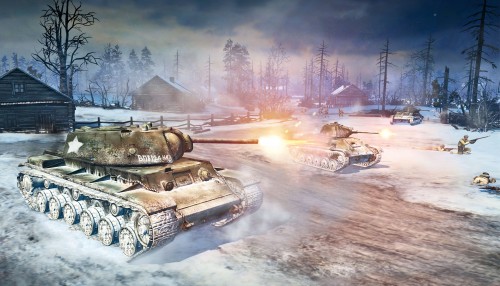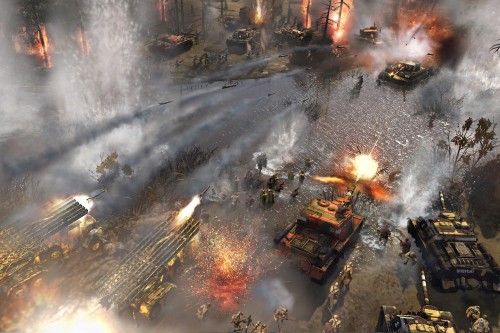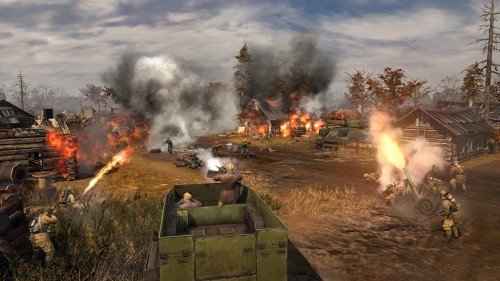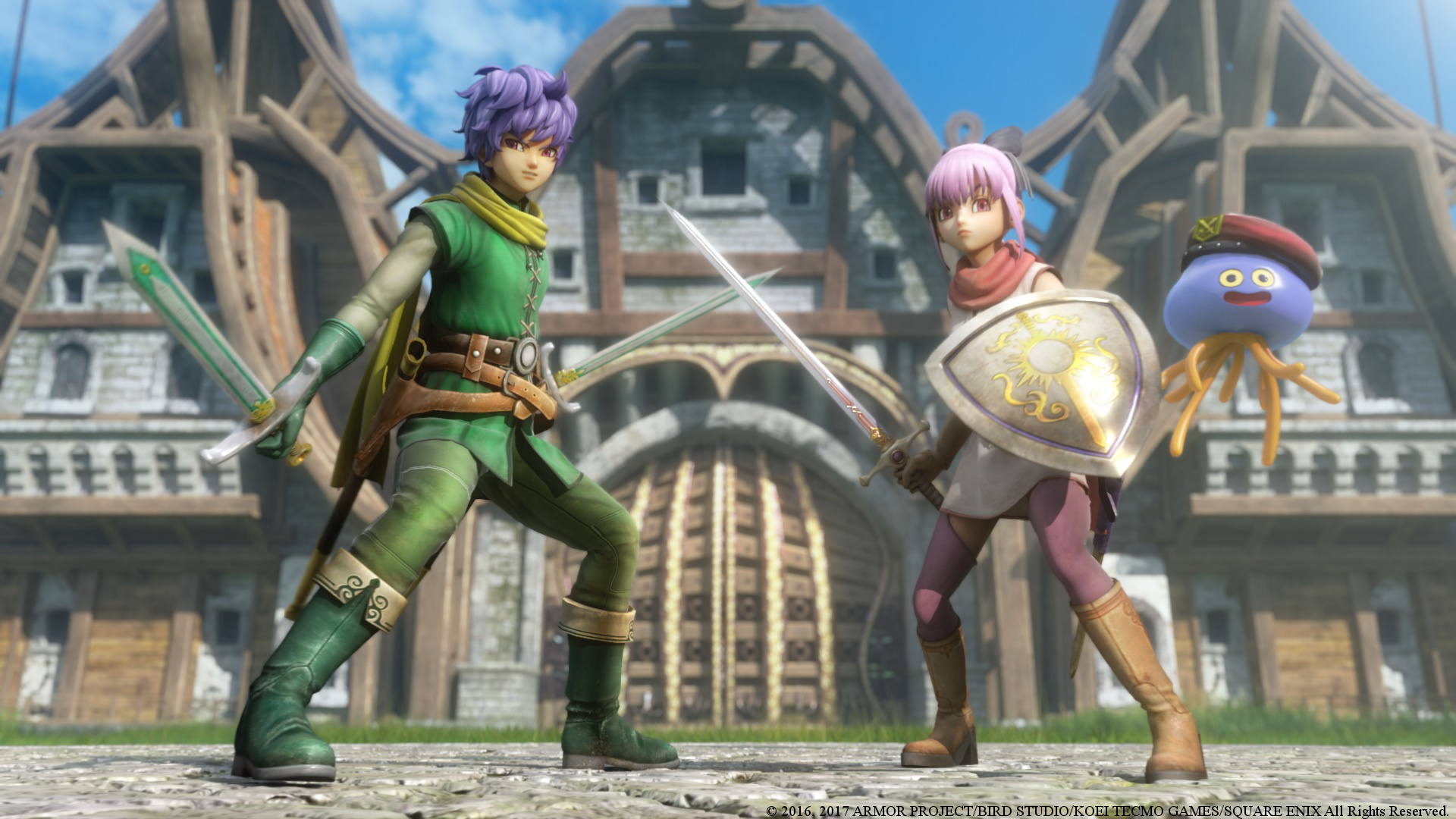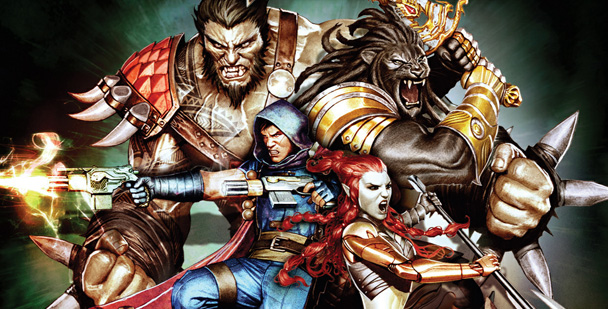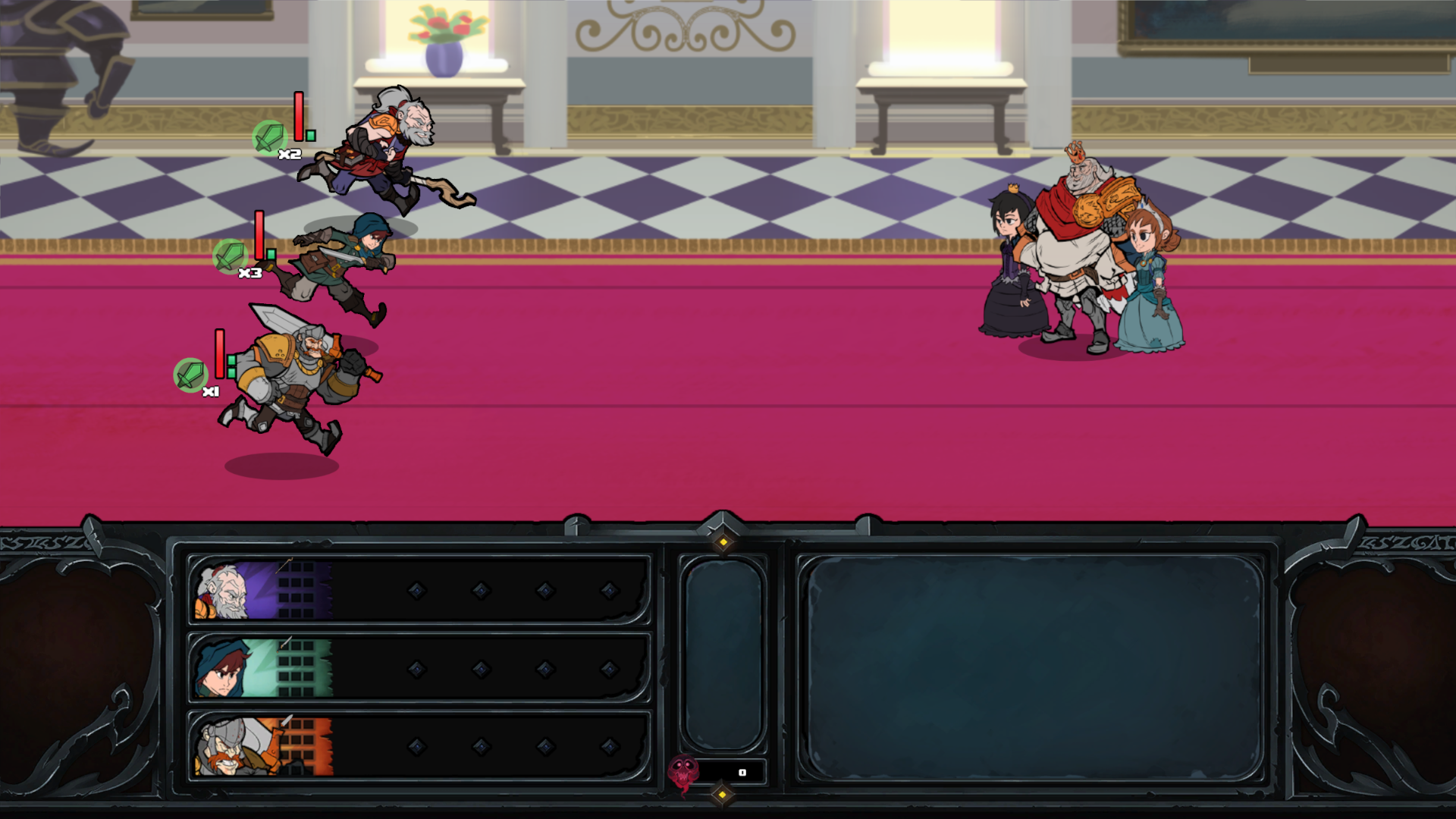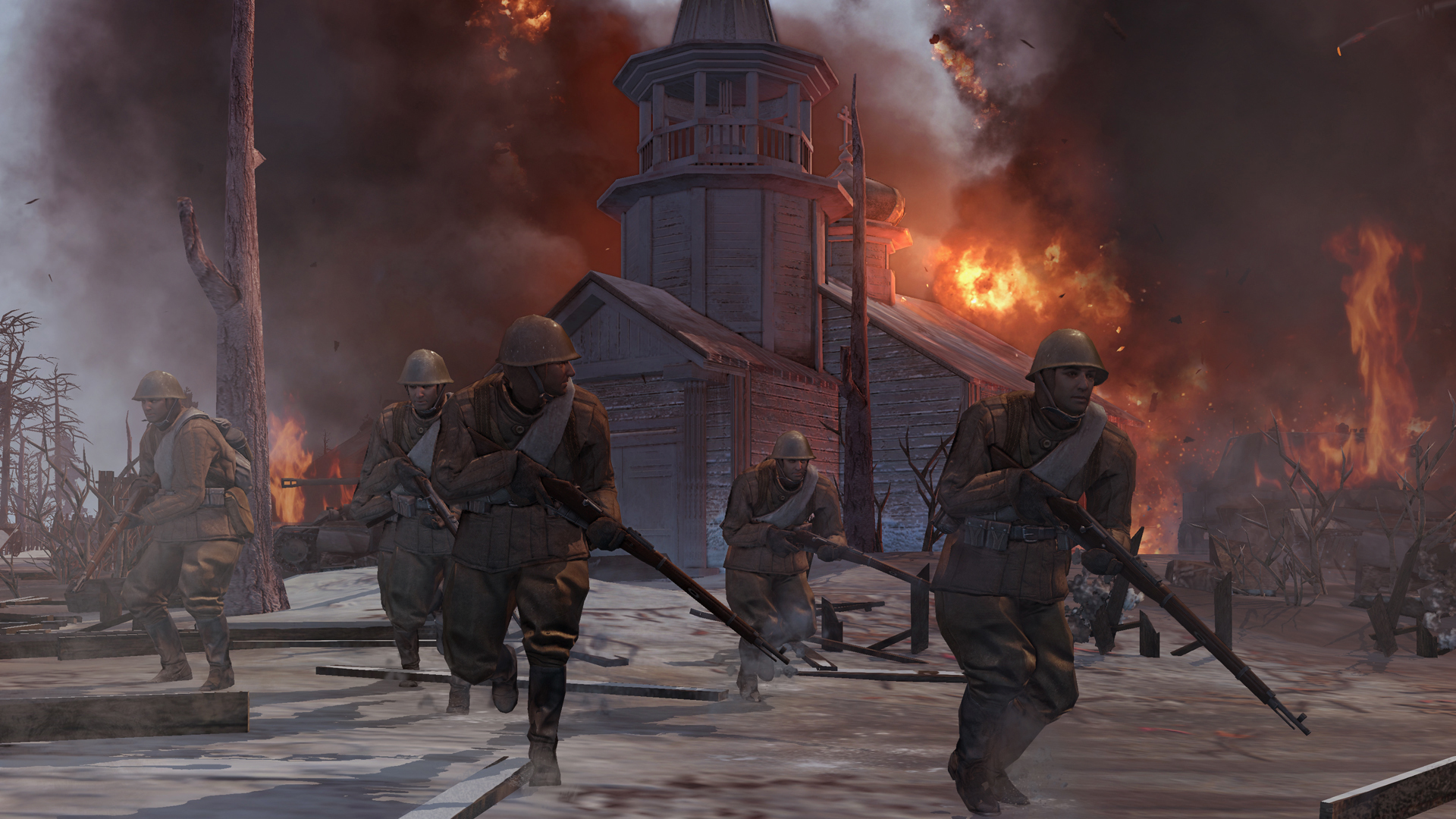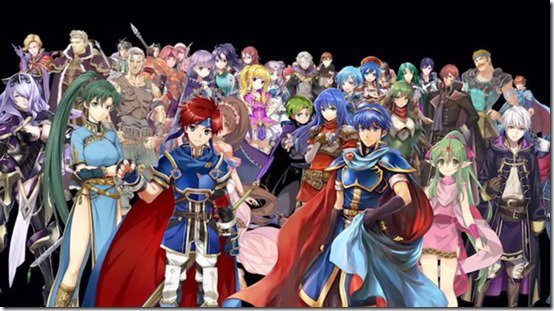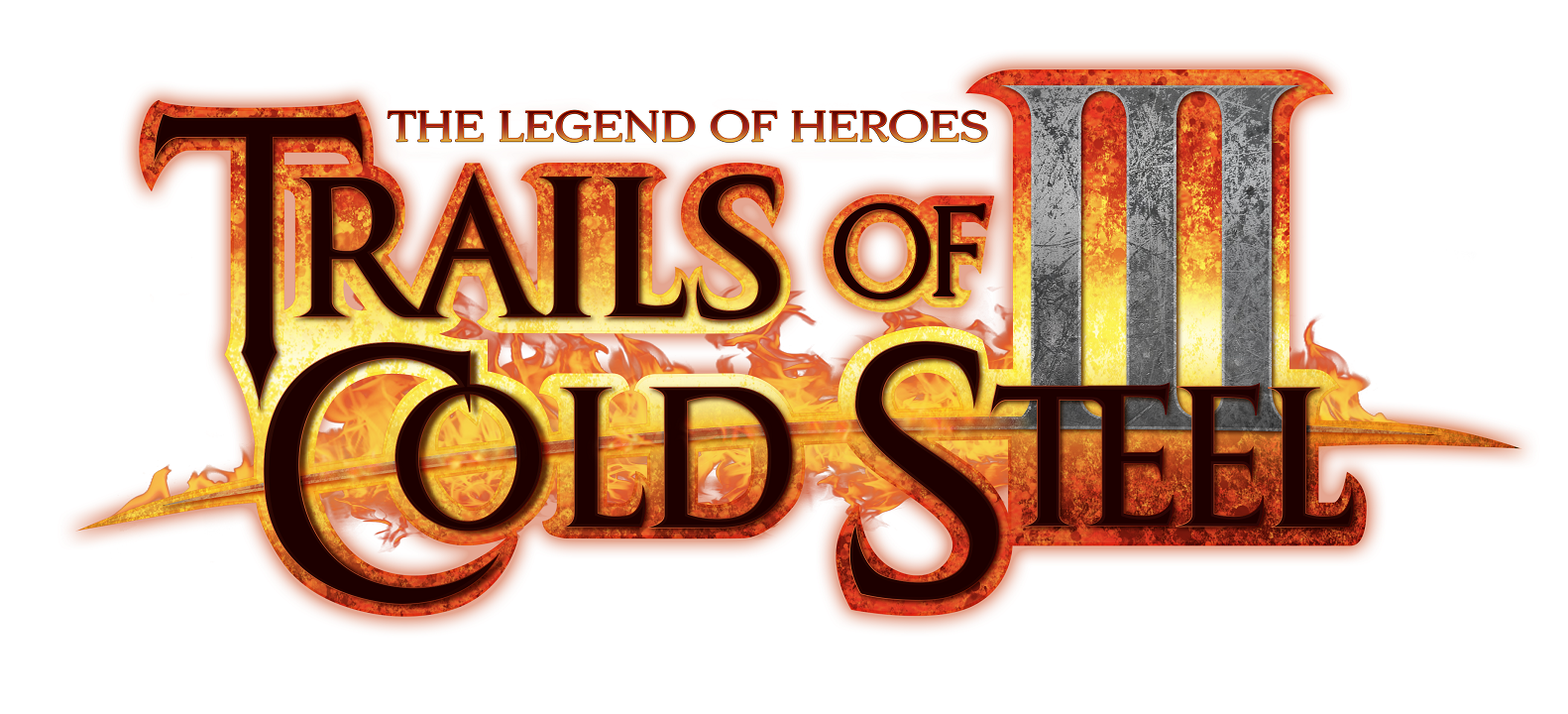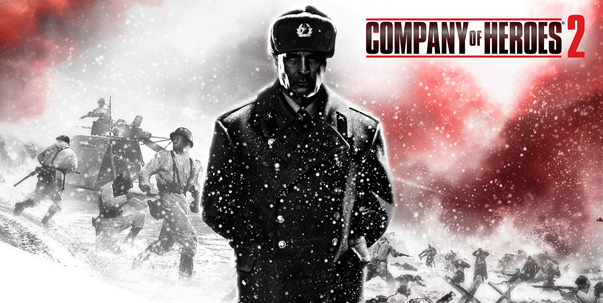
It’s been awhile since the last Company of Heroes, but not as long as you might think. In my head it seems like decades ago, when in reality it’s been under seven years. I attribute this to the game releasing at the very tail end of my high school experience, one that feels like it was aeons ago. It probably doesn’t help that the game was padded with two expansions in the two years following release. And then there was Company of Heroes Online, and of that I remember nothing, like a lot of people, I suspect.
Anyway, the point is that I’m surprised it took nearly seven years for Company of Heroes to see a true successor, largely due to the original’s overwhelmingly positive reception, both critically and commercially. In an age of your Total Wars, Age of Empires, so-so Star Wars RTS, and the endless StarCraft legacy,Company of Heroes‘ involving squad dynamics and gorgeous presentation injected some much needed life into the real time strategy scene, while also proving that not every World War II themed game needed to be a bloody first person shooter. Then…nothing. Well, there were those two expansion packs, but overall Relic seemed more distracted with the Warhammer 40,000 IP to stick with Company of Heroes. Not that I mind. Both Dawn of War II and Space Marine were excellent fun.
But I digress. Here we are in 2013, Relic having made the move from THQ to SEGA, and finally delivering to the world Company of Heroes 2. And though it’s great to see this iconic RTS series make a return, it does beg the question: is this too little, too late?
Excessively retreading the past is usually detrimental, and so Relic made the wise decision to uproot the setting of Company of Heroes and shift it elsewhere. No, this isn’t a different war, but it is a different front.Company of Heroes 2 moves the battle to the Eastern Front, retaining the German Nazi Empire as your staple enemies, while replacing your usual American and British troopers with the Soviet Red Army. I’ve always been fascinated by the Eastern Front, as Western media tends to gravitate towards English speaking involvement, so it was great to see the ripple effect of something as simple as a location change.
On a fundamental level you’ve got unit types and machinery reworked for the Soviet Union’s war involvement, naturally resulting in Soviet-esque unit ranking, and vehicles likes the BM-13 rocket truck and the T-70 light tank. Wielding the Red Army is pretty interesting, actually, if unnecessarily stereotypical. They’re seen as relatively cheap and expendable, units given very specific roles and individuals not particularly good at multi-tasking. This works well with Company of Heroes‘ patented squad focus, giving unit functions a nice rock/paper/scissors-like role in each battle. That’s an oversimplification, obviously, as the multitude of units (on both sides) expands play towards something more like rock/paper/scissors/tank/flamethrower/engineer/mines/grenade/grunt and so on. The historic (and again stereotypical) history of Red Army’s “Not one step back!” also comes into play, as you’re able to call in expendable back-up squads in battle based on a timer.
That campaign is worked around this Red Army chaos fairly well. The plot is forgettable CGI cinematic drive silliness, ripe with Soviet Union clichés and a drab story of an imprisoned Russian commander recounting his war experience,and it will lead you through the expected Eastern Front conflicts. You’ll fight through what was then Stalingrad, as well as Leningrad, and ultimately take the Reichstag. Yeah, it’s the same stuff we’ve seen in every Eastern Front WW2 game, but Company of Heroes 2 at least keeps it interesting with missions routinely mixing up unit availability and encounter types. I was also really happy to see secondary objectives make it into the game, which are fed to you progressively as you make your way towards main objectives. Usually these require you rescue troops and provide support for NPCs stranded in optional areas of the map, and the rewards are more often then not extra units for you to use. This is text book RTS stuff, but Company of Heroes 2 is often a text book RTS, so anything to keep campaign missions interesting is welcome.
I think by far the most interesting twist Company of Heroes 2 brings, through use of the Eastern Front, is the impact of weather on units. Unlike most of the Western Front, Germany’s battle against the Soviets wasn’t just man vs. man, it was man vs. weather. Company of Heroes is known for making a big deal of how individual units interact with the game world, rather than expendable squad grouping Total War style, and weather shifts provide the perfect opportunity to highlight how rough battles must have been for some soldiers. Snow significantly slows down unit movement (and generates a cool displacement effect as they trod through), snow storms reduce line of sight (and allow the deployment of flairs for vision), and units can even freeze to death if they’re left too long without a heat source. I find a lot of strategy games focus entirely on unit play, almost ignorant of the map itself and the kind of gameplay changes it can introduce, so it’s great to see Company of Heroes 2 further pushing external variables as defining factors in battle.
Undermining Company of Heroes 2 are missteps in unlocks and DLC (more on that in a second), and how similarly a game in 2013 plays like a game from 2006. That latter point is going to be subjective, but ultimately Company of Heroes 2 draws a striking amount of comparisons to the mechanics of Company of Heroes. This can be spun as a good thing, because Company of Heroes worked bloody well. But aside from some (very welcome) streamlining and tightening of controls and unit functions, there’s an odd and mildly unappealing sensation of familiarity when throwing yourself into the thick of battle. Aside from the war front shift, there’s not a lot separating Company of Heroes 2 from its predecessor, as the underlying mechanics of taking cover, intricate control of squads, worming around tanks to attack their weak points, and making advantageous use of building cover result in a “samey” feeling. The campaign also fails to inspire originality, even though it does do its best to keep each individual mission fairly unique it still feels like it’s walking arm-in-arm with the 2006 release. You’ve played Company of Heroes 2 before, it was just based in a different theatre of war.
What I was most surprised with was seeing unlockable content seep into the multiplayer component.Company of Heroes 2 tries to implement a kinda…perk-like system with commanders, allowing you to customise your profiled squad with units specialising in certain battle advantages, cosmetics, and other bits and pieces. Cosmetics are forgivable, as they’re irrelevant when it comes to actual play. But in a game formula built around strategy the idea of locking off certain variations and potential advantages to unlocks and DLC just seems…wrong. Like Relic or SEGA wanted to jump on the whole micro-transaction band wagon and decided a real time strategy game where unit balance is vital would be best enhanced by offering unlocks that can shift said balance. It doesn’t make a lot of sense and feels really out of place for the kind of gameCompany of Heroes 2 is.
But issues aside, Company of Heroes 2 does have a lot going for it. You’ve got your campaign, which lasts a good fourteen or so missions, and your multiplayer. And you’ve also got a ton of skirmishes and other non-campaign missions to select from, some competitive and others co-operative. Company of Heroes 2 isn’t shy on content, so if you dig the gameplay there’s plenty to sink into. And even though the story is forgettable and the CGI scenes reminiscent of early late-90s early-2000s gaming, a lot of work has gone into making the game look and sound great. The score is fantastic, battles have suitable ambience and effects, and thoughCompany of Heroes 2 isn’t breaking graphical ground for this era like its predecessor did back in 2006, it still looks pretty great with clean presentation and highly scalable assets to ensure it runs on a wide variety of platforms. Plus, as said, that snow displacement looks really good.
I do think arguments of stagnancy are justified, Company of Heroes 2 playing so similarly to the original. It doesn’t rattle the cage, and is a far cry from a surprising sequel with big, interesting changes like Relic did with the excellent Dawn of War II. And that’s always going to beg the question: is this the sequel fans wanted? If bolder game concepts and true evolution of a series that really only had one major release, with a couple of expansion packs, is the minimum prerequisite bar of entry then I could easily see some fans being let down. However, playing it safe isn’t always a bad decision, especially in this case where “safe” also equates to “good”. Company of Heroes 2 might play a whole lot like Company of Heroes, but for some fans that is nothing short of great news, as the original did such a good job standing the test of time, that a safe sequel simply means more familiar fun on a different front.
Solid gameplay | Eastern Front weather twist | Plenty of content
Very similar to the original | Unnecessary microtransactions and unlocks

